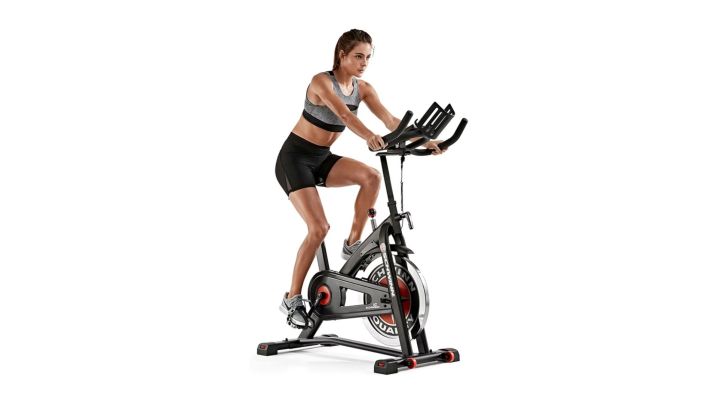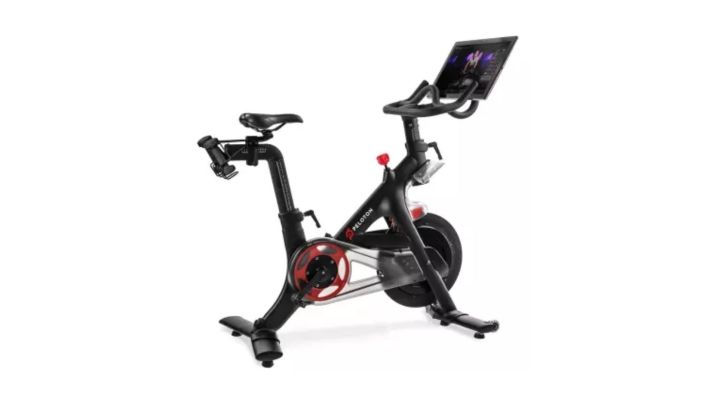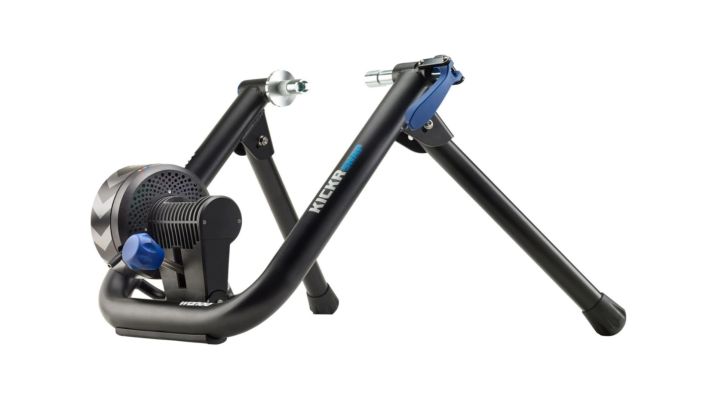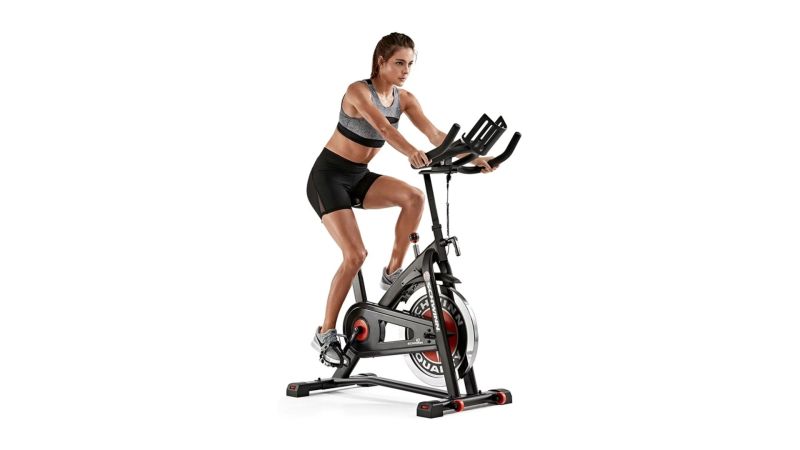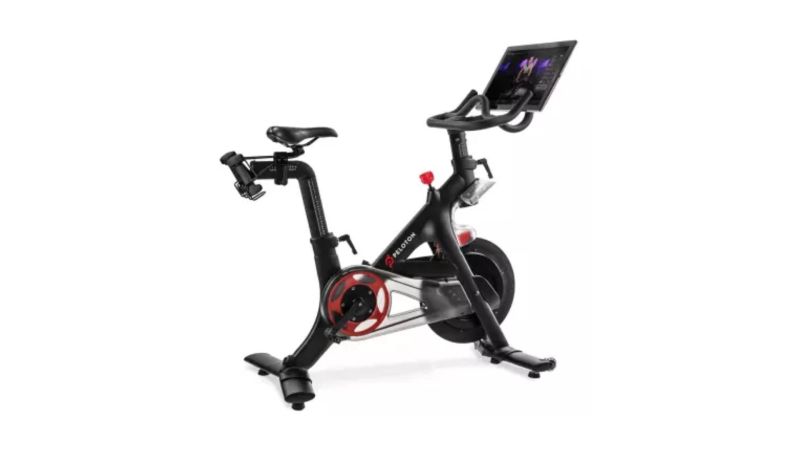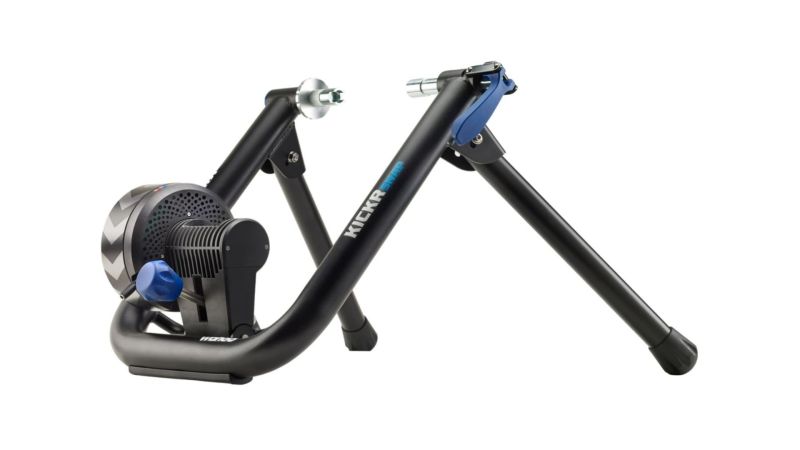We may earn revenue from the products available on this page and participate in affiliate programs.
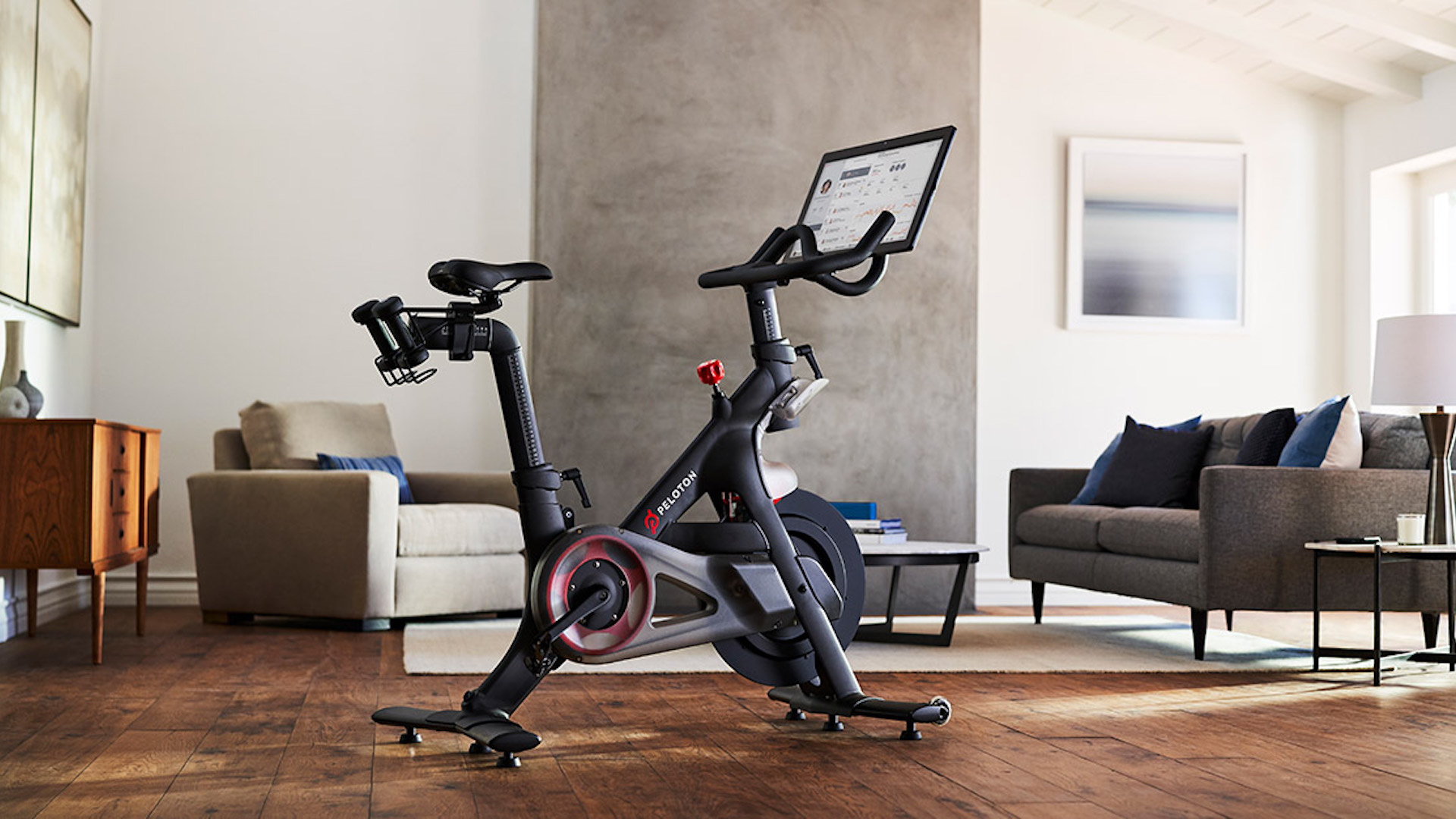
Indoor cycling has been gaining popularity faster than the demand for bread recipes during lockdown. Given our collective need to stay fit and healthy, putting a stationary bike in our home gym wouldn’t be a bad idea.
Cycling purists might turn up their noses at riding indoors, and that’s ok. I’ve ridden both and noticed that riding inside results in far fewer incidents that involve a white-knuckle grip on the bars while careening downhill on a road bike that’s older than I am. Maybe the wine moms are on to something.
This guide wraps up first-hand experience, customer feedback, and market research to bring you concise buying advice with no nonsense. We’re here to break down the ins and outs of indoor cycling and identify three of the best ways to get your fitness fix without dodging traffic in full-body spandex.
Best Traditional Exercise Bike
Schwinn IC3
Best Smart Exercise Bike
Peloton Bike
Best Trainer
Wahoo Fitness Kickr Snap
Why you should trust us
We’re fitness nuts here at Task & Purpose, and I’ve logged plenty of miles on road bikes, mountain bikes, and a few styles of stationary bikes. Whether you’re training to rock the PFT or trying to stay in fighting shape in between Veterans Day discounts at your favorite restaurant, we’ve got insight into the workouts and gear that can get you there. Want to improve your cardiovascular fitness? We’ve tracked down the best ellipticals and rowing machines out there. Looking to stock your gym bag with get-strong goodies? We’ve got you covered. Maybe you just want to save a few bucks, in which case we work hard to sniff out the best deals out there.
Types of indoor cycling bikes
Traditional
Originally, indoor cycling was designed to provide a similar workout to what you’d get from a road bike without leaving the house or gym. As you increase your budget, you’ll get access to more adjustable features, like seats and handlebars, and higher-end components, like pedals and drivetrains.
We include upright and recumbent bikes in this category. All forms of traditional spin bikes can provide you with a good workout at a fairly reasonable price, but some are better than others. Yes, sitting on a cushy seat with a backrest is more comfortable than being perched on a skinny bicycle seat, but it’s not the best way to challenge your body. For this guide, we focused our search on machines that mimic a real bicycle.
Interactive
The next step in the evolution of indoor cycling was the introduction of online classes. Peloton gets the credit for this fitness craze, but competition is catching on and there are several solid alternatives from brands like NordicTrack, Echelon, and Bowflex on the market now. Some even move to simulate hills or lean into a turn.
The advantage of each of these bikes is a massive catalog of live and on-demand classes, scenic rides, and data-tracking tools. These features come with a monthly subscription fee, but the benefit is undeniable. If you’re serious about indoor cycling or training for riding season, this is a fantastic way to go. Just be prepared for extra up-front and recurring costs.
Trainers
No, we’re not talking about people who come into your home and yell at you. Trainers are possibly the oldest indoor cycling tool. These compact devices attach to your bicycle to let you ride it like a stationary bike indoors. The bare-bones approach doesn’t offer as many features as other styles and does require you to own a bicycle, but the advantage is getting more seat time on your primary ride.
There are two styles of trainers. One sits under your bicycle and is powered by the rear tire as you pedal. The other requires removing the rear wheel and chain so you can use a built-in cassette that becomes part of your bike’s drivetrain. Both styles have advantages and disadvantages, and which you choose will ultimately come down to personal preference. We chose a wheel-on style for this guide because of its ease of use.
Key features of indoor cycling bikes
Adjustable fit
Most indoor cycling bikes offer a wide range of adjustability to account for riders of different sizes. Unlike bicycles that are sold with different sizes of frames, indoor bikes come in one size with components that can be moved. Ideally, the seat and handlebars should move up and down as well as front to back. This will allow you to custom-fit the bike to your legs and torso independently.
Most adjustments are made using a series of holes spaced at even intervals. This method is extremely secure but slightly limiting. If you fall between two settings, it’s generally recommended to use the smaller of the two settings to avoid overextending your muscles. Other bikes use a set-screw to squeeze a smooth piece of metal. This method is theoretically less secure but offers infinite adjustment. We’d be comfortable using either.
Adjustable resistance
Because you won’t be encountering hills, it’s important to choose an indoor cycling bike that can offer a range of resistance. By increasing or decreasing the amount of drivetrain friction, you can make the experience more challenging from a strength perspective or back off and focus on endurance.
There are many ways manufacturers accomplish this. The cheapest way is to apply mechanical friction by physically impeding the flywheel. This is what you’ll find in most gyms because it’s inexpensive and easy to operate and maintain. Some bikes use magnets to apply resistance. This is much smoother and avoids physical wear and tear, but it can also be more expensive.
Online classes and communities
Quite possibly the biggest advantage of owning an indoor cycling bike is having access to a massive archive of online classes, virtual rides, and personalized data-tracking. You can also join live classes with world-class instructors to learn from the best and feed off other attendees’ energy.
These services are a huge upgrade to any stationary bike, but they aren’t cheap. Expect to pay a monthly subscription of $15 to $40 on top of the bike’s purchase price. If you ask us, these features are worth every penny. Take that money out of your entertainment or dining budget and chalk it up to a lifestyle change.
Benefits of indoor cycling bikes
Convenience
Anyone who says they’ve never looked out the window before a workout and thought “nah, maybe tomorrow” is probably being less than truthful. The same goes for avoiding driving to the gym before the sun comes up or postponing dinner in the name of an after-work ride. Having an indoor bike at home can keep you active when life throws up obstacles.
With the wealth of online classes and instructors available, indoor cycling is better than ever. The machines themselves are also improving, so you can grind through a tough ride without waking everyone in the house. The gym and road will still be out there, but we can guess where you’d rather ride most of the time.
Safety
Cycling might not be the most extreme sport out there, but it’s not without risk. There’s actually evidence to suggest that your lifetime odds of dying on a bicycle are higher than your odds of dying in a car or motorcycle.
Riding in the rain and cold is no fun. Cycling in the dark or when cars have reduced traction can be downright hazardous. Even if you do everything right, you can’t control the people who fire up two tons of steel and stare at their phone instead of looking where they’re going. Having the ability to exercise in the comfort of your own home is a nice backup.
Access to trainers and workouts
Indoor cycling was popular when people had to drive to a gym and claim a seat in spin class; now that anyone can pop in virtually, participation is through the roof. Brands like Peloton, NordicTrack, Bowflex, and Echelon make world-class cycling instructors available anywhere there’s an internet connection.
Want to work out at your own pace? The same subscriptions also open the door to training programs and scenic rides. Interact with other riders. Track your performance and chase personal goals. Quality cycling knowledge has never been more accessible. You’ll have to pay a monthly fee for these features, but we think the benefits far outweigh the cost if you ride at least a few times per week.
Pricing considerations for indoor cycling bikes
Budget
There’s no shortage of indoor cycling bikes that cost less than $500, but they aren’t all on the same level. Building a stationary bike for that kind of money can require some cost-cutting that might not be worth the savings to you. In many cases, you’re better off spending a little more on something that runs smoother and lasts longer.
Trainers like the Wahoo Fitness Kickr Snap are an exception to this. The small devices that work with your actual bicycle are much simpler to produce than an entire stationary bike, so you can get one of many great options for less than $500. If you prefer the authentic feel of riding and shifting gears on a real bicycle, this is the ideal choice.
Mid-range
The price range between $500 and $1,000 is where you’ll find some of our favorite indoor cycling bikes. This includes bikes from Schwinn, Concept 2, and Diamondback Fitness. They bridge the gap between budget bikes and the premium experience that comes with a touchscreen and online subscription.
What you’re paying for with these bikes is build quality. Expect top-notch construction and attention to detail. Seats and handlebars will be adjustable so you can get the perfect fit. Moving components like the crankset and flywheel will operate more smoothly and quietly than less expensive alternatives. A lot of gyms use this kind of indoor cycling bike because they do the job well and rarely have problems.
Premium
The world of premium indoor cycling used to belong to Peloton, but competition from brands like NordicTrack and Bowflex has arrived. These bikes offer more than just impeccable craftsmanship and smooth operation; they unlock an ever-expanding world of live and on-demand classes with elite cycling instructors. Expansive catalogs of virtual rides can keep you entertained when you want to ride solo. You can even track your performance over time to monitor your progress and celebrate every milestone you reach.
We get it, shelling out $1,500 (which most of these bikes cost in basic trim) is a lot of money. The fee for virtual content will tack on an extra $15 to $40 every month. But if you’re serious about getting in shape and making cycling part of your fitness routine, this is the way to go.
How we chose our top picks
There are a ton of indoor cycling options out there, and it can be difficult to find the right one. Our list is by no means exhaustive, but we think it’s important to find great options for different types of riding. To do this, we broke indoor cycling into three categories: traditional spin bikes, smart bike systems, and trainers that can be used with a real bicycle. With those parameters established, we decided which options in each category would be the best option for most people based on build quality, customization, and useful features. The result is a no-nonsense guide that accounts for various styles and budgets.
FAQs on indoor cycling bikes
You’ve got questions, Task & Purpose has answers.
Q. How do I set up my indoor cycling bike correctly?
A. Every adjustable component on your bike—typically the seat, handlebars, and distance between—needs to be adjusted to your body. Proper setup will make you more efficient and less likely to get hurt. Treadmill Review Guru has a great breakdown of how to do this correctly.
Q. What’s the difference between a spin bike and an exercise bike?
A. These terms are flexible, but spin bikes tend to do a better job of imitating a real bicycle. That makes them great for off-season training and overall fitness. Exercise bikes might include upright bikes and recumbent bikes that are designed to offer more comfort. Check out Fitness Guides for more information.
Q. Which is better, cycling indoors or outdoors?
A. Riding outdoors will always be more of a challenge because of varying terrain and environmental factors, not to mention the skill required to control a bicycle at speed. Indoor cycling has the advantage of keeping you in a climate-controlled area where you aren’t limited by weather, traffic, and safe places to ride.
Our gear section
Scott Murdock is a Task & Purpose commerce writer and Marine Corps veteran. He’s selflessly committed himself to experiencing the best gear, gadgets, stories, and alcoholic beverages in the service of you, the reader.
